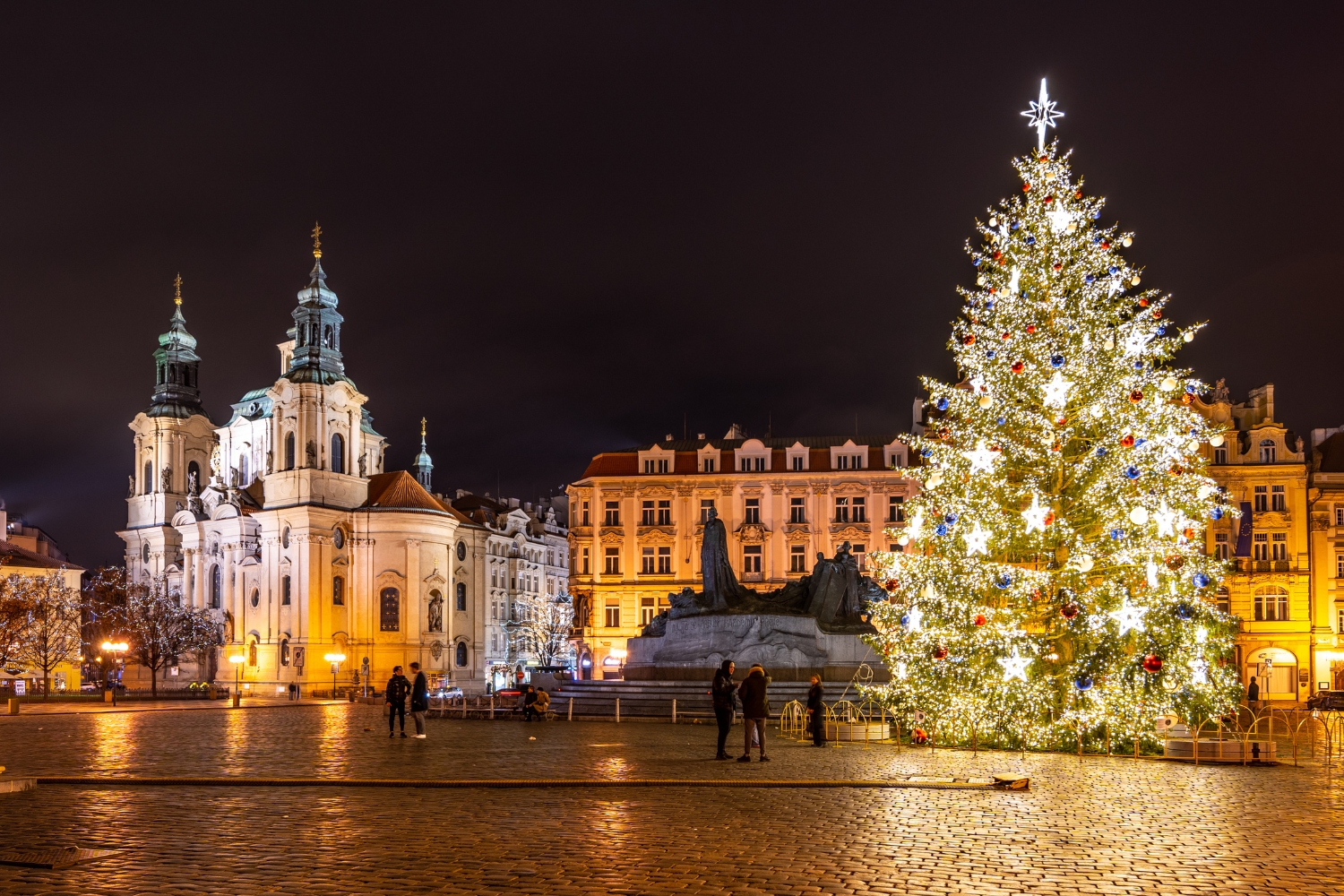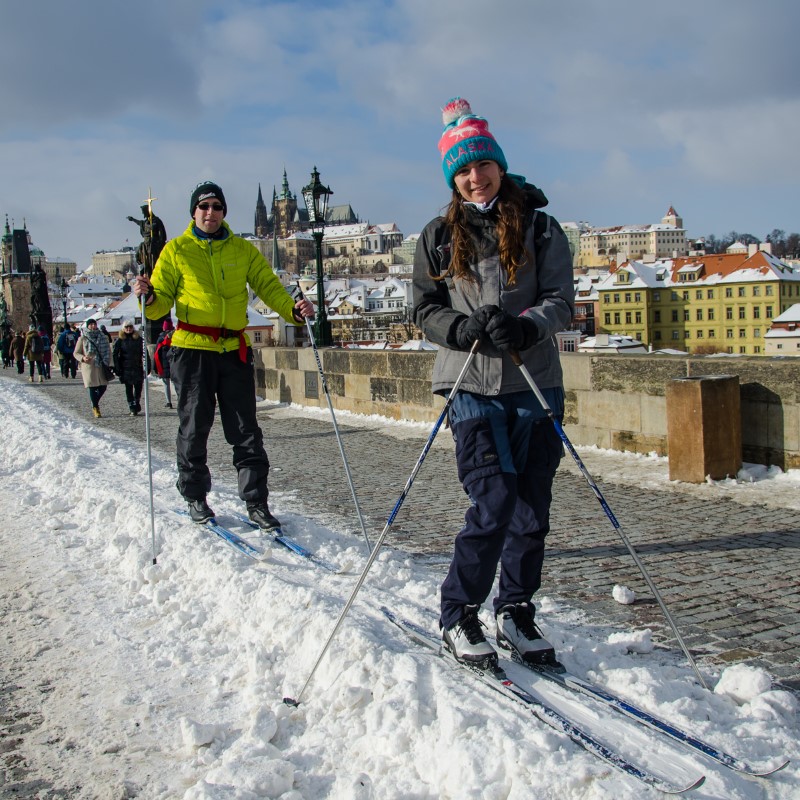
Written by local experts Adriana & Matěj
Adriana and Matěj Halouskovi are travel bloggers behind the successful blog Czech the World.
Matěj was born in Prague and has lived here his entire life and Adriana moved here 6 years ago.
We have traveled to more than 60 countries, but if we could tell you what place we know the most, it is our city.
As a Czech native, Christmas has always been a magical time for me, a time when children eagerly await the evening of December 24th, listening for the tinkling bell that signals Ježíšek’s arrival, lighting up the Christmas tree, and gathering the whole family around it.
Let me guide you through our beautiful Czech Christmas traditions and the festive season that begins with Advent. From the charming streets full of festive lights, and Christmas Markets to the unique customs and traditions.
Advent – Where the Christmas Season Begins
Advent in Czechia is a time when the country transforms into a winter wonderland. It traditionally begins on the fourth Sunday before Christmas. The exact date varies each year, but it usually starts between November 27th and December 3rd.
It’s a time when the vibrant Christmas markets spring to life, families come together to craft their Advent wreaths, and each lit candle on the wreath symbolizes a step closer to the magical Christmas Eve.
So, what are the traditions and Advent activities:
- Advents Wreaths Making – We were making these already as school kids. Wreaths are typically made of evergreen branches (mostly from spruce or fir) symbolizing everlasting life. The wreath holds four candles, each representing one of the four Sundays leading up to Christmas Eve.
- Christmas Markets – Who wouldn’t love them? These wooden stalls transform town squares into fairytale places, filled with twinkling lights, and the aroma of traditional foods. Nearly all of these have a Christmas tree and a smaller or bigger nativity scene there.
Christmas Markets are not only places to buy gifts but mostly places of gatherings, where you can sip svařené víno (mulled wine) and eat trdelník (a sweet pastry). You can be sure to find them everywhere, from the biggest Christmas markets in Prague to the small towns like Nová Bystřice. - Baking Cukroví – Baking ‘cukroví’, the traditional Czech Christmas cookies, is a beloved Advent activity. Czech kitchens come alive with the scent of these sweet treats, made in a variety of shapes and flavors. Families often bake together, passing down recipes through generations. You can bet that grandmas have the best ones! These cookies are not just for family; they are often shared with friends and neighbors at Christmas gatherings.
- Advent Calendars – Advent calendars are a fun and exciting way for children and adults alike to count down the days until Christmas. In the Czech Republic, these calendars often feature small doors or windows for each day of Advent, hiding chocolates, or small gifts. This tradition came from our German neighbors.
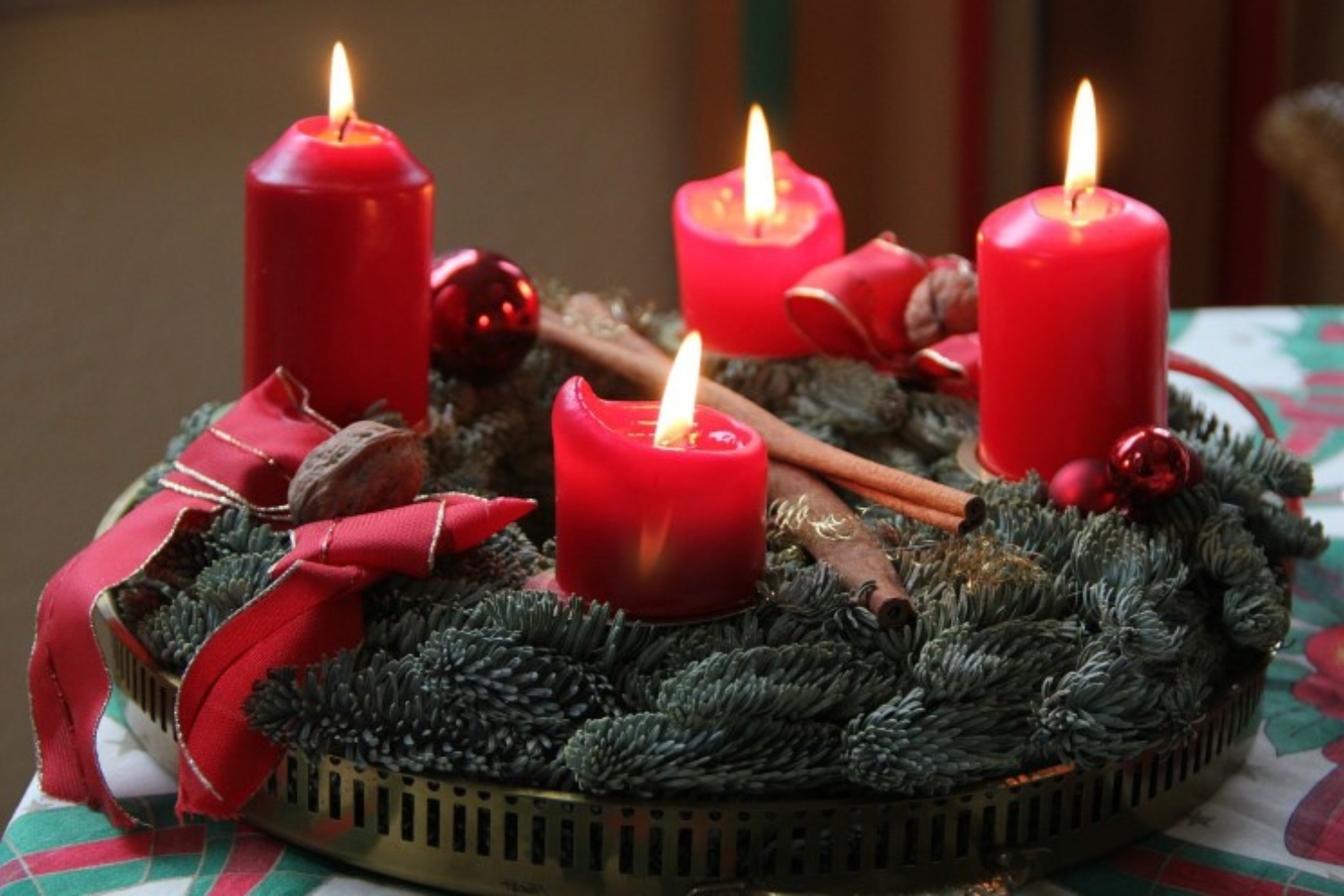
December 4th – Traditions of Barborky
December 4th is a Saint Barbara’s Day. In Czech, Barbora. But if you want to say it in a nice way it’s Barborka. Here the name comes from.
On this day it is traditional to cut branches from cherry trees and bring them indoors. These branches, known as “Barbora’s branches” or “Barborky,” are placed in a vase of water. If the cherry branches blossom by Christmas Eve, it is seen as a symbol of good luck and prosperity for the upcoming year. In some interpretations, especially in romantic folklore, the blooming of these branches by Christmas is also seen as a sign of a young woman’s impending marriage in the year ahead.
Btw. from our experience, they nearly always boom 🙂

December 5th – Mikuláš (Saint Nicholas Day)
December 5th in Czechia marks the celebrated yet slightly daunting tradition of Mikuláš, or Saint Nicholas Day. This day is eagerly awaited by children across the country, albeit with a mix of excitement and a hint of fear.
On Mikuláš, the figure of Saint Nicholas roams the streets, usually accompanied by an angel and a devil (čert). Saint Nicholas rewards well-behaved children with sweets, making the day a much-anticipated treat.
However, the devil, a fearsome figure with horns and a black suit, adds a sense of fear to the festivities. He carries a sack for the naughty children. The idea is that if a child has been mischievous throughout the year, they risk being taken away by the devil in his sack.

December 24th – Štědrý den
December 24th is the most important day of the Czech Christmas!
Final preparations and fast
The day typically begins with final preparations for the evening’s festivities (while watching fairytales on TV – there are fairytales all day long)!
Many people do a traditional fast, until Christmas dinner in the evening. This fast is often associated with an old belief that those who fast will see a golden pig, a symbol of good luck, on the wall. In our family, we usually don’t fast but cook lentil soup for lunch to bring money to the family.
Christmas Tree Decorations
Not all, but many Czech households keep the tradition of decorating the tree on Štědrý den itself, adding to the day’s excitement and anticipation.
Traditional Czech Christmas Dinner
The highlight of Štědrý den is the Christmas dinner, served in the evening. The meal typically starts with fish soup, followed by the main course, which is fried carp and potato salad. A scale from the Christmas carp must not be missing under the dinner plate for good luck and prosperity in the coming year.
Ježíšek – Most Awaited Moment
After dinner, the moment that everyone, especially children, eagerly awaits arrives the gift-giving. According to Czech tradition, presents are brought by Ježíšek (or Baby Jesus). No, we don’t believe in Santa Claus. The sound of a bell often signals that Ježíšek has delivered the gifts, and everyone gathers around the Christmas tree to open them.
The beautiful thing about Ježíšek is, that every kid has its own picture or imagination of Ježíšek! It’s a nice creature that brings presents, right? For me, it was a mixture of a snowman and a bird (it had to have wings because we were living on the 2nd floor), made of Christmas decorations.
Christmas Carlos and Midnight Mass
The evening may also include singing or listening to Christmas carols. For many, attending the midnight mass is also a significant part of the Christmas Eve celebration.
Štědrý den in the Czech Republic is a blend of festive joy, family togetherness, and the warmth of tradition, making it a deeply cherished and meaningful celebration.
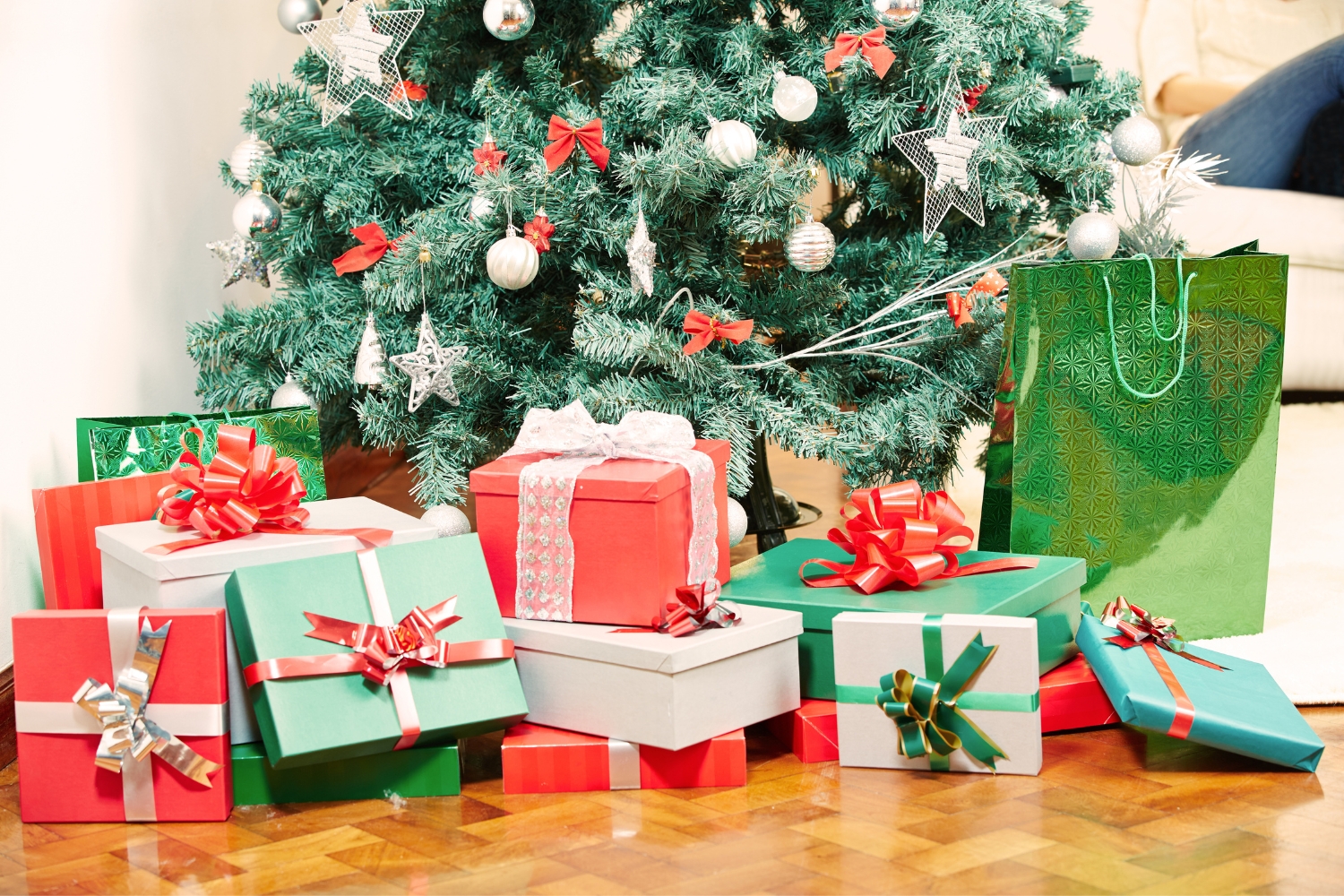
December 25th – First Christmas Day
In the Czech Republic, December 25th, known as “První svátek vánoční” is a continuation of the festive Christmas celebrations. The day is characterized by a more relaxed and family-oriented atmosphere.
Families often spend the day together, enjoying fairytales, gifts, and the calm and warmth of each other’s company. It’s a time for leisurely activities such as going for walks, visiting relatives, or simply relaxing at home. The focus is on togetherness and enjoying the holiday spirit.
December 26th – Second Christmas Day
Second Christmas Day in Czechia often has a more relaxed and social character. The 26th is a time when people often visit extended family members and friends whom they did not see on the previous days. It’s a day for catching up, sharing stories, and enjoying each other’s company.

January 6th – Three Kings’ Day
The celebration of “Tři králové” or “Three Kings’ Day” in the Czech Republic is an event that marks the end of the Christmas season. It is celebrated on January 6th.
One of the most common traditions is the chalking of the door. On this day, people or children dressed as the Three Kings write the initials (C+M+B, standing for Caspar, Melchior, and Balthazar) and the year on the doorframes of houses. They often sing carols and collect donations for charity.
This act is believed to provide blessings and protection to the household for the coming year.

Czech Christmas Traditions
1) Cutting the Apple
Cutting the apple is among the traditional Christmas customs. The apple is cut crosswise into two halves. If a star appears inside, it means luck and health. If a cross appears or the apple is wormy, it foretells illness or death.
Earlier, there was always an effort to choose the nicest apple that looked healthy. Similarly, predictions were also made from walnuts. A healthy fruit meant joy and happiness, while a spoiled nut signified misfortune and sadness.

2) Lead Pouring
Lead pouring is a Christmas tradition across many European countries. Melted lead is poured into cold water and the resulting shapes are used to predict the future. Melted wax can also be a substitute for lead.
Each member of the household should pour a piece of lead while contemplating their future. Different people may interpret the shapes differently, but there are common interpretations:
- Straight lines indicate a calm and content life.
- Two connected circles suggest an upcoming marriage.
- Two broken circles foretell a separation from someone close.
- A square symbolizes a life in harmony with nature.
- A cross represents death.
- Two crosses denote a secure old age.
- A triangle predicts business success.
- A house with a roof signifies happiness at every step.

3) The Golden Pig
Many are familiar with the belief that those who fast on Christmas Eve until evening will see a golden pig. This tradition likely stems from our Celtic ancestors, for whom the pig was a symbol of luck, wealth, and abundance.
You must see this! It’s our beloved Kofola advertisement about the “golden pig”!
4) Launching Walnut Shell Boats
The tradition of launching walnut shell boats is a Christmas custom that helps to foretell the future. Everyone wanting to predict their future must create and set their own candle-lit boat on the water. The behavior of the walnut shell boat with the candle determines their fortune for the coming year. Traditionally, the entire family participates in this activity.
Interpretations from the boat’s behavior:
- A boat that stays near the shore suggests no significant changes ahead.
- A boat that sails far away indicates a journey or successful plans.
- A boat sailing with another signifies good interpersonal relationships or love.
- Boats forming a circle represent harmonious living, mutual respect, friendship, and tolerance.
- A boat remaining amid others indicates a need for protection or assistance.
- A boat spinning in a circle denotes indecisiveness.
- The longest-lasting boat on water or aflame implies a long and happy life.
- A boat that sinks immediately suggests futile efforts to improve situations.
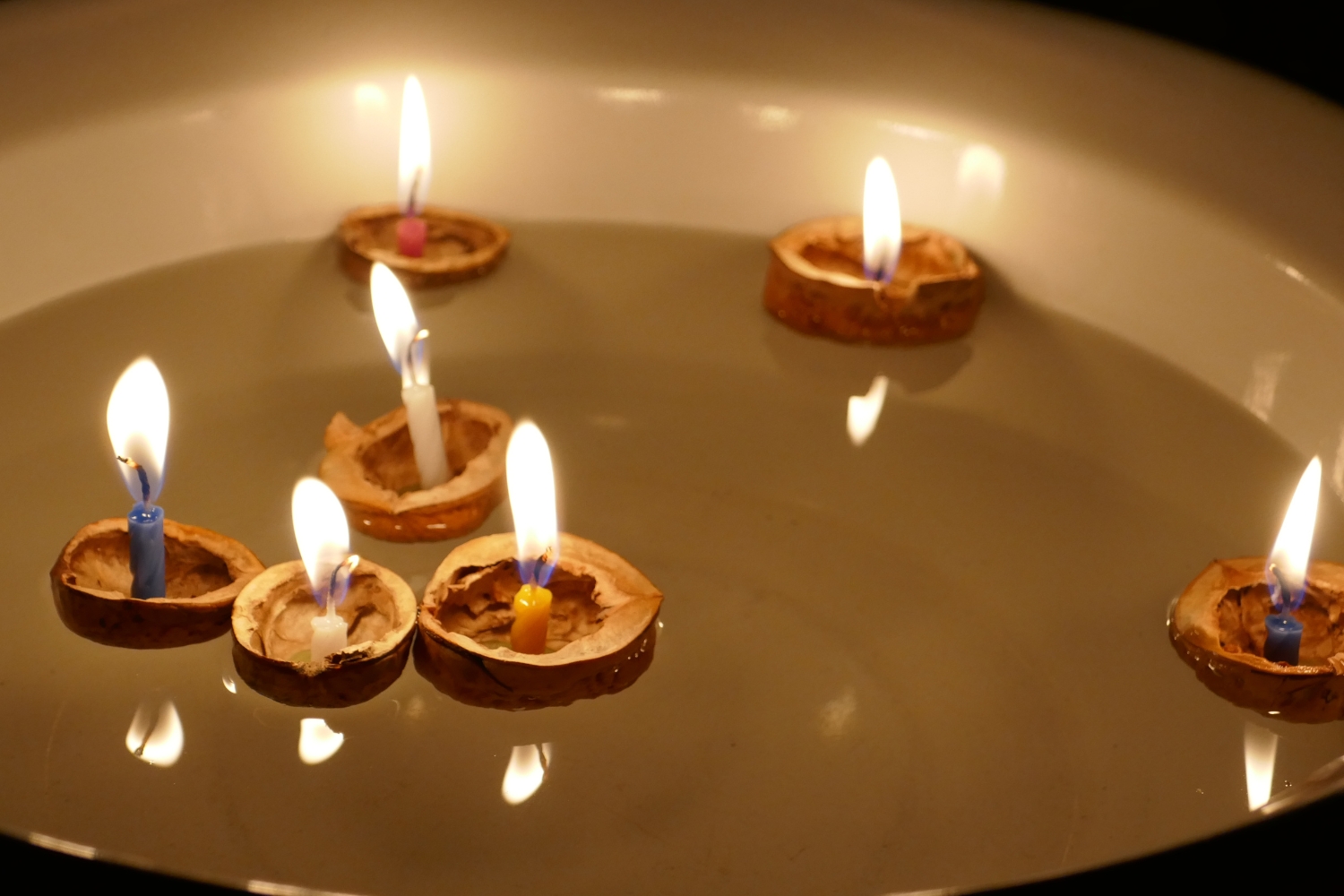
5) Throwing a Slipper
The tradition of throwing a slipper or shoe is a Christmas custom for single girls curious about their marital prospects in the upcoming year. Standing with her back to the door, the girl throws a shoe over her shoulder. If the tip points out of the door, a marriage may be in her near future. Otherwise, her circumstances remain unchanged.

6) Carp Scale Under the Plate
A carp scale placed under the plate is a must at the Christmas Eve dinner, as per tradition, it brings wealth. After dinner, keep the scale in your wallet to safeguard your finances.
7) Mistletoe
The tradition of hanging mistletoe, which emerged in the late 19th century, originated in England. When two people kiss under the mistletoe, it is said to bring them luck and love. Given as a gift, mistletoe is believed to bring luck and protection from illnesses.
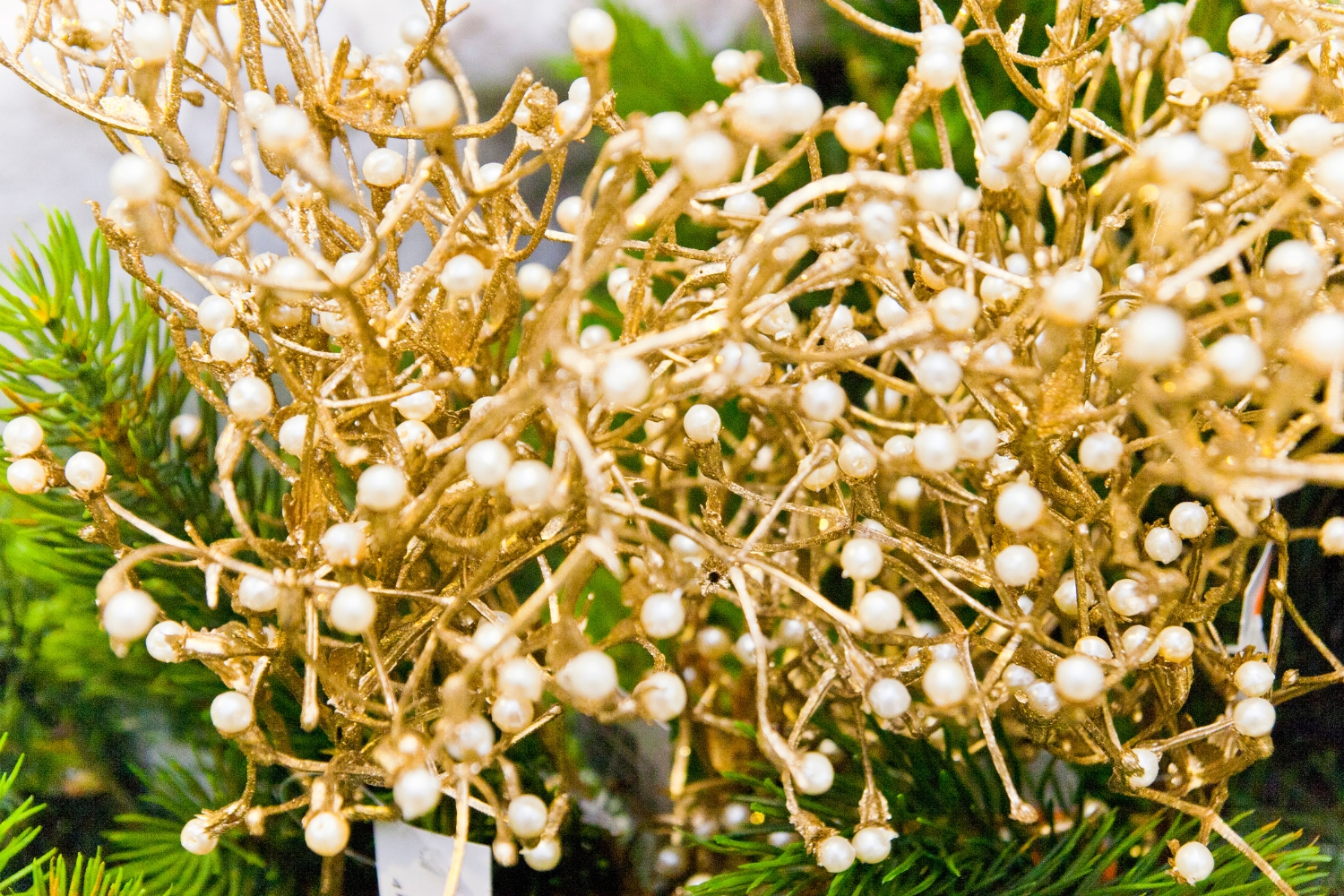
8) Nativity Scenes
Nativity scenes or cribs, depicting the birth of Jesus Christ, have long been an integral part of Christmas traditions. The Baroque era brought an unprecedented development in Nativity craftsmanship.
In Northern Bohemia and Eastern Moravia, Christmas processions were incomplete without portable cribs carried around the neck by shepherds and carolers. Since the early 19th century, nativities have become increasingly sought after, often placed under the newly emerging phenomenon of the Christmas tree.
The first mention of a Jesuit Nativity dates to 1560 in Coimbra, Portugal, and two years later, a nativity in the St. Clement Church in Prague is noted.

9) Bethlehem Light
The Bethlehem Light is among the newer Christmas traditions. Each year, the light is ignited in the birth cave of Jesus and then flown to Austria, where scouts from around the world gather to collect and distribute it.
Czech scouts travel to Vienna for the Bethlehem Light, which first stops in Brno. This tradition began with the ‘Light in Darkness’ campaign and was introduced by Ada Brandstatter from Austria as a symbol of peace. The idea for its widespread distribution was proposed in 1988 by scout leader Herbert Grünwald. Since then, an annual ecumenical ceremony has been held in Vienna, where the flame of peace is passed to scout delegations from across the globe.
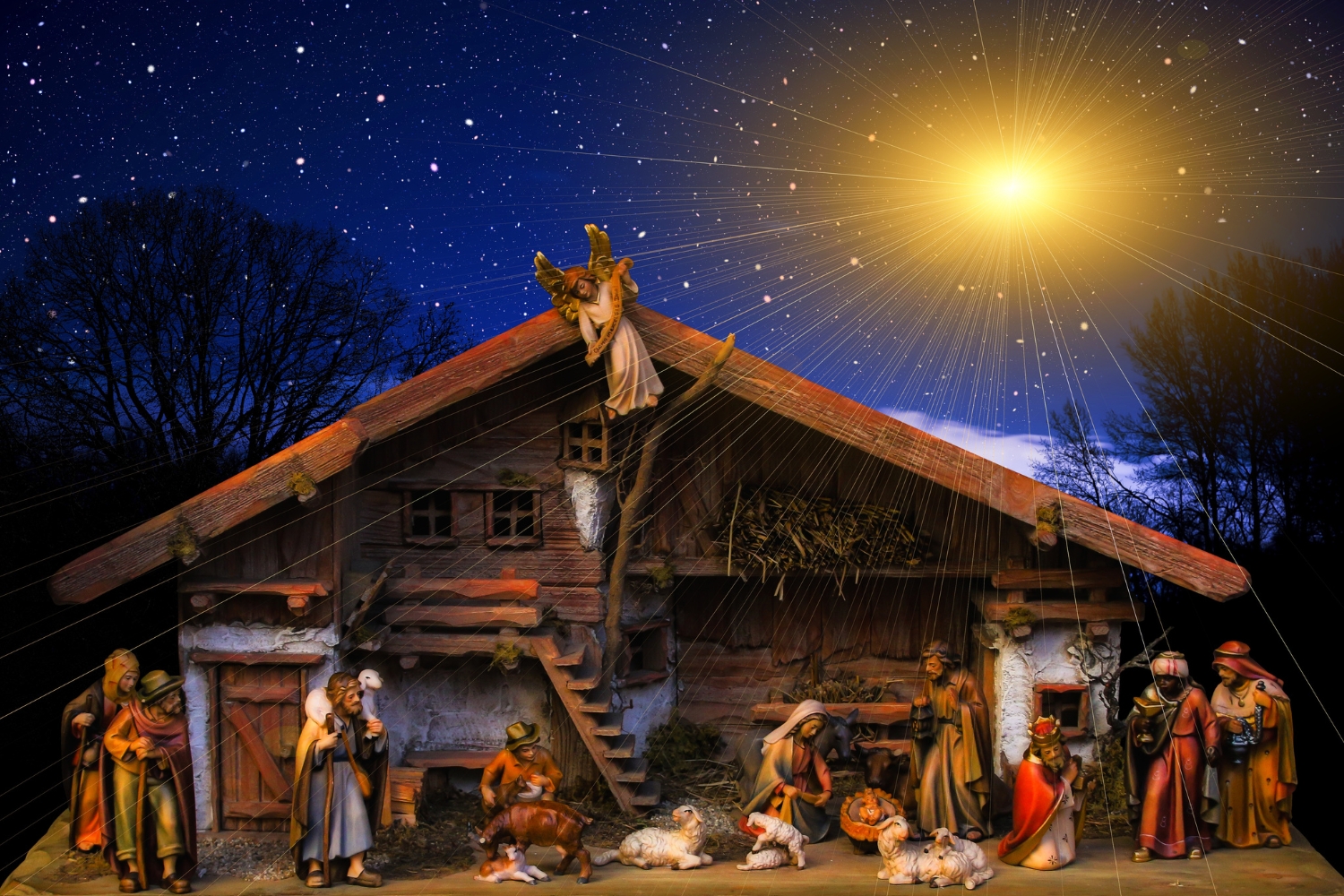
10) Vánočka – Christmas Bread
Baking Christmas bread is one of the oldest Czech Christmas traditions. Its presence on the Christmas table is essential as the leavened dough symbolizes the growth of happiness and prosperity. Its predecessor, the calta, has been baked since the 14th century. Initially exclusive to bakers, it wasn’t until the 18th century that homes started baking their own. A loaf was baked for each family member, and it wasn’t unusual to bake a coin into it. The recipient of the piece with the coin was believed to have a prosperous year ahead.
Each strand of the Christmas bread also holds symbolism – the four lower strands represent the sun, water, air, and earth. The upper braid of three strands symbolizes the unity of mind, will, and honor.
11) Christmas Tree
While tree decoration stems from ancient pagan traditions, the Christmas tree as a symbol of the holiday found its way into Czech homes in the 19th century, initially a privilege of wealthy bourgeois families. The tradition of decorating trees as we know it today originates from Livonia (Estonia, Latvia) and Germany.
Now, it’s also customary to place large Christmas trees in town squares. The first such tree in the Czech Republic was erected in 1924 at Brno’s Freedom Square.
Gifts under the tree started appearing in the 19th century as well. Previously, gifts were given to servants, farmhands, or carolers, typically in the form of food or clothing.

12) Midnight Mass
Midnight Mass has become a lovely Christmas tradition for both believers and others who want to listen to carols and soak in the festive atmosphere. This stems from historical gospels, which suggest Jesus was born at night. Often, the Czech Christmas Mass by Jan Jakub Ryba is heard.
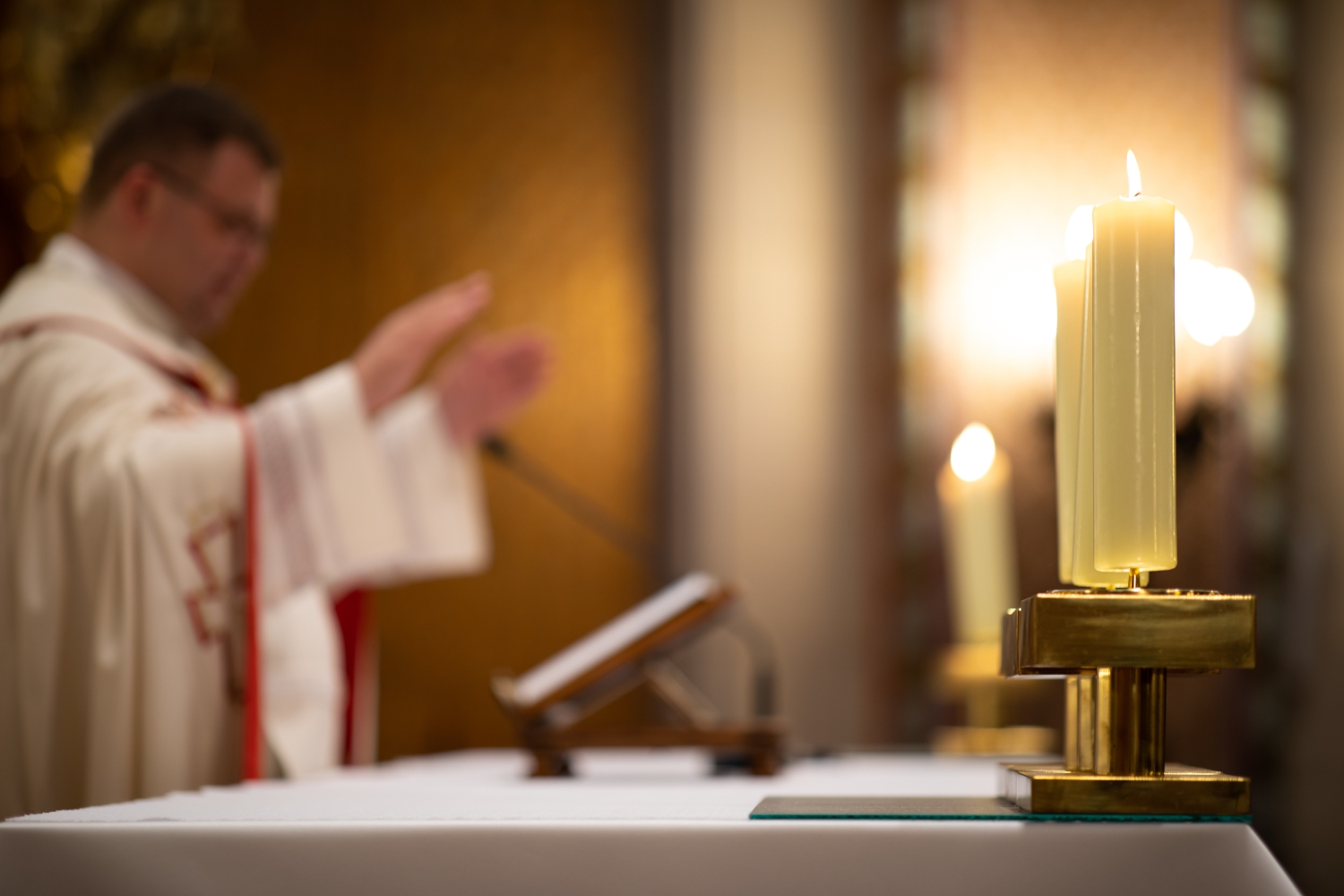
13) Burning Incense and Purpura
The tradition of burning incense, known as ‘františky’, originates from Krušné hory and is 300 years old. The incense, associated with the scent of frankincense brought by the Three Kings to the newborn Jesus, was used to purify homes at the turn of the year. ‘Františky’ typically contains burnt charcoal and resin from true frankincense trees.
Purpura is a mixture of fragrant herbs and spices laid on stoves, from which the aromatic scent gradually evaporates. It includes lemon balm, mint, nutmeg, lavender, thyme, marjoram, oregano, chamomile, rose leaves, conifer needles, raspberry leaves, blackberry, or blueberry, among others. Today, in the absence of traditional stoves, purpura can be placed on heaters or used in aroma lamps.

Old Czech Christmas Superstitions
1) Knocking on the Henhouse with a Shoe
Single girls used to knock on the henhouse door with a shoe at Christmas to predict their marital prospects. If a hen clucked first, it meant the girl would remain single. If a rooster crowed, it signaled a potential groom on the horizon.
2) Apple Peel Divination
Girls seeking to learn the initial letter of their future husband’s name would peel an apple to form a long spiral. Standing, they would spin the peel above their head three times and throw it behind them. The letter that the discarded peel resembled was believed to hint at the name of their future spouse.
3) Shaking the Elder Branch
After the Christmas Eve dinner, single girls would shake Elder branches and chant, “I shake, I shake the Elder, let me hear the dog, where my beloved is today,” or “I shake, I shake, I quiver, let me hear a voice, where I will dine again next year.” The direction of a dog’s barking was thought to indicate where their future husband would come from.
Boys had a similar tradition, with the direction of the first star in the sky indicating where their future bride would come from.
4) Log Divination
Curious single girls and boys could pull a log blindly from a pile to predict their future partner’s appearance. A straight log indicated a beautiful partner, a crooked or knotty log meant a limping partner and a thick log suggested a hefty spouse.
5) Ice Hole
Another superstition held that if a single girl broke a hole in the ice on a pond, she could see her future husband’s face.
6) Another Apple Divination
Single girls tried countless methods to predict if they would marry in the coming year. One superstition involved eating an apple by the outside door. If the first person to pass by was a man, it indicated impending nuptials; if it was a woman, the girl would remain single.
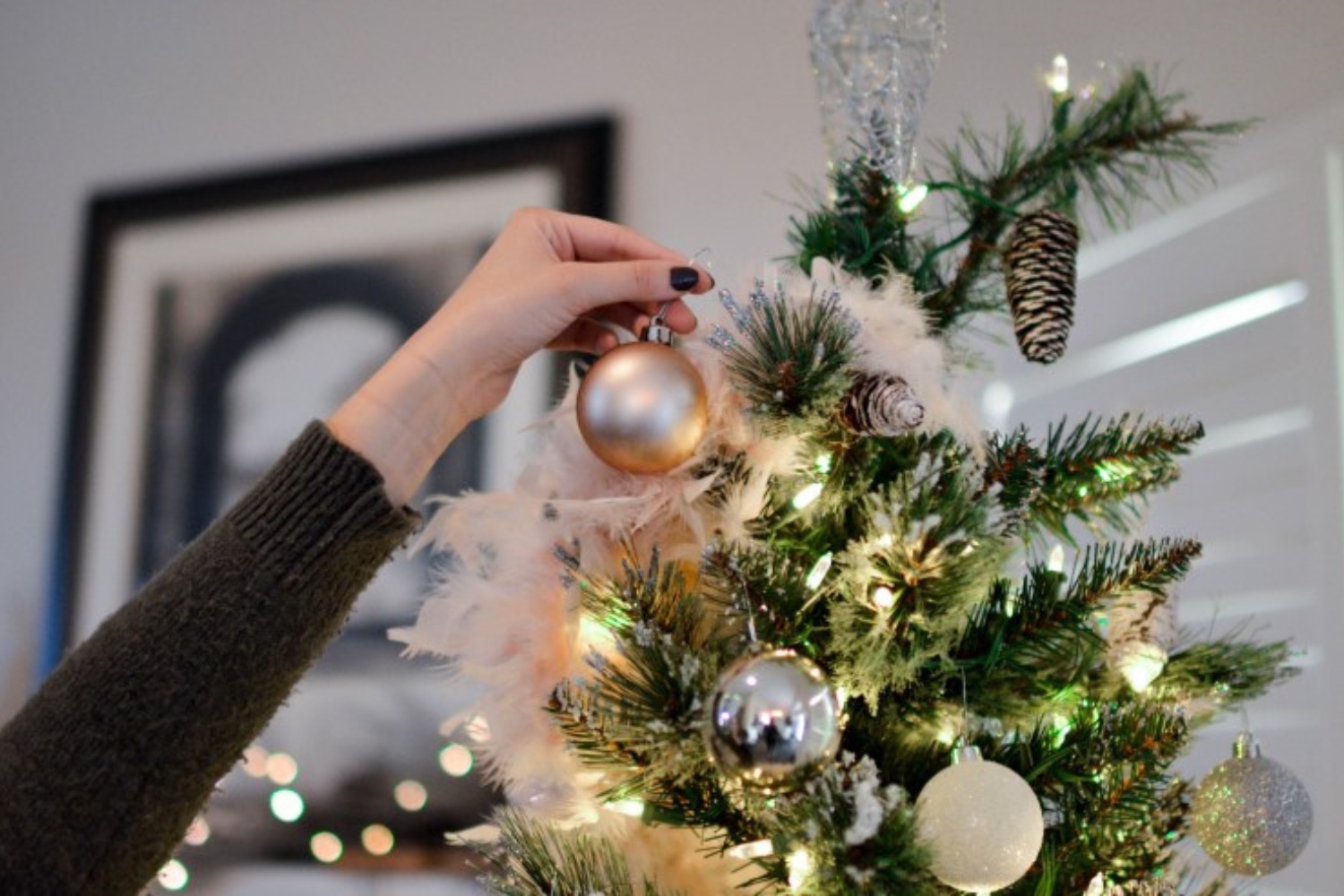
What you can’t (shouldn’t) do on Christmas Eve?
There are more of these old and odd Czech Christmas superstitions:
- On Christmas Eve, hanging laundry is forbidden to avoid someone hanging themselves during the upcoming year.
- Cleaning barns and stables is avoided, as it’s believed to cause limping in livestock.
- Sweeping is not done to avoid sweeping away the souls of the dead, who are believed to visit.
- Sewing and knitting are also prohibited to prevent mice from ruining the work.
- The housewife should not stand up from the Christmas Eve dinner table before everyone is done eating, or the chickens won’t lay eggs. One variation says that anyone who leaves the table earlier, within the year will die.
Czech Christmas – Conclusion
So now, you are an expert on Czech Christmas and Traditions. Maybe there is a last thing you need to know. How to greet Merry Christmas in Czech:
Merry Christmas in Czech is: Veselé Vánoce
Veselé Vánoce to all of you!
Pin Czech Christmas for later or for your friends:

Did this post about Czech Christmas help you? Share it with your friends! It can help the

